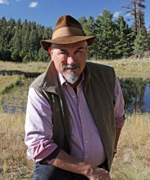—Alan Dulaney
 Some incidents attract immediate attention. On August 5, 2015, an EPA contractor working on the abandoned Gold King mine near Silverton, Colorado, accidentally allowed the release of less than 10 acre-feet (3,000,000 gallons) of acid mine drainage that had built up inside the plugged mine. The water flowed down Cement Creek and into the Animas River, passing through Durango several hours later. The river turned orange, and the entire nation watched, aghast at yet another environmental disaster.
Some incidents attract immediate attention. On August 5, 2015, an EPA contractor working on the abandoned Gold King mine near Silverton, Colorado, accidentally allowed the release of less than 10 acre-feet (3,000,000 gallons) of acid mine drainage that had built up inside the plugged mine. The water flowed down Cement Creek and into the Animas River, passing through Durango several hours later. The river turned orange, and the entire nation watched, aghast at yet another environmental disaster.
This was a relatively transitory event. As the heavily mineralized water continued down the Animas River, into the San Juan and hence the Colorado River, pH moved upward. The high concentrations of metals dropped as these cations precipitated out of solution. Any sediments to which the metals bonded that reached Lake Powell were lost in the silts that routinely collect behind the dam and pose no threat to central Arizona. By August 14, the City of Durango was once again delivering surface water from the Animas River to its citizens. Dilution was the solution to pollution here — but it wrecked the tourist economy of southwestern Colorado. The Animas will be known for decades as the river that flowed orange.
Acid mine drainage is a legacy of the mining activity that made the West. Hundreds of abandoned mines in Colorado — and Arizona — are the sources of acid mine drainage that pose an environmental problem that continues today. The blowout at the Gold King Mine is one example of what can happen if these problems are not addressed. It is not always possible to find responsible parties to handle cleanups for 19th Century mines that were abandoned in the 20th, and government must often step up.
This is why we need a strong ADEQ and a well-funded Water Quality Assurance Revolving Fund program. The WQARF program has served Arizona well in cleaning up acid mine drainage at sites such as Pinal Creek. This site has been under ADEQ supervision since 1989; no orange water has ever impacted Globe or points downstream as a result of this remediation project. It is far better to approach state problems with state agencies than to give over that power to EPA.
Workshops at the Annual Symposium on September 16 will focus on the Clean Water Act Section 404 permitting and the new Underground Storage Tank program at ADEQ. Both workshops are important for consulting firms and regulators alike. Sign up now if you haven’t already done so and strengthen your environmental expertise.